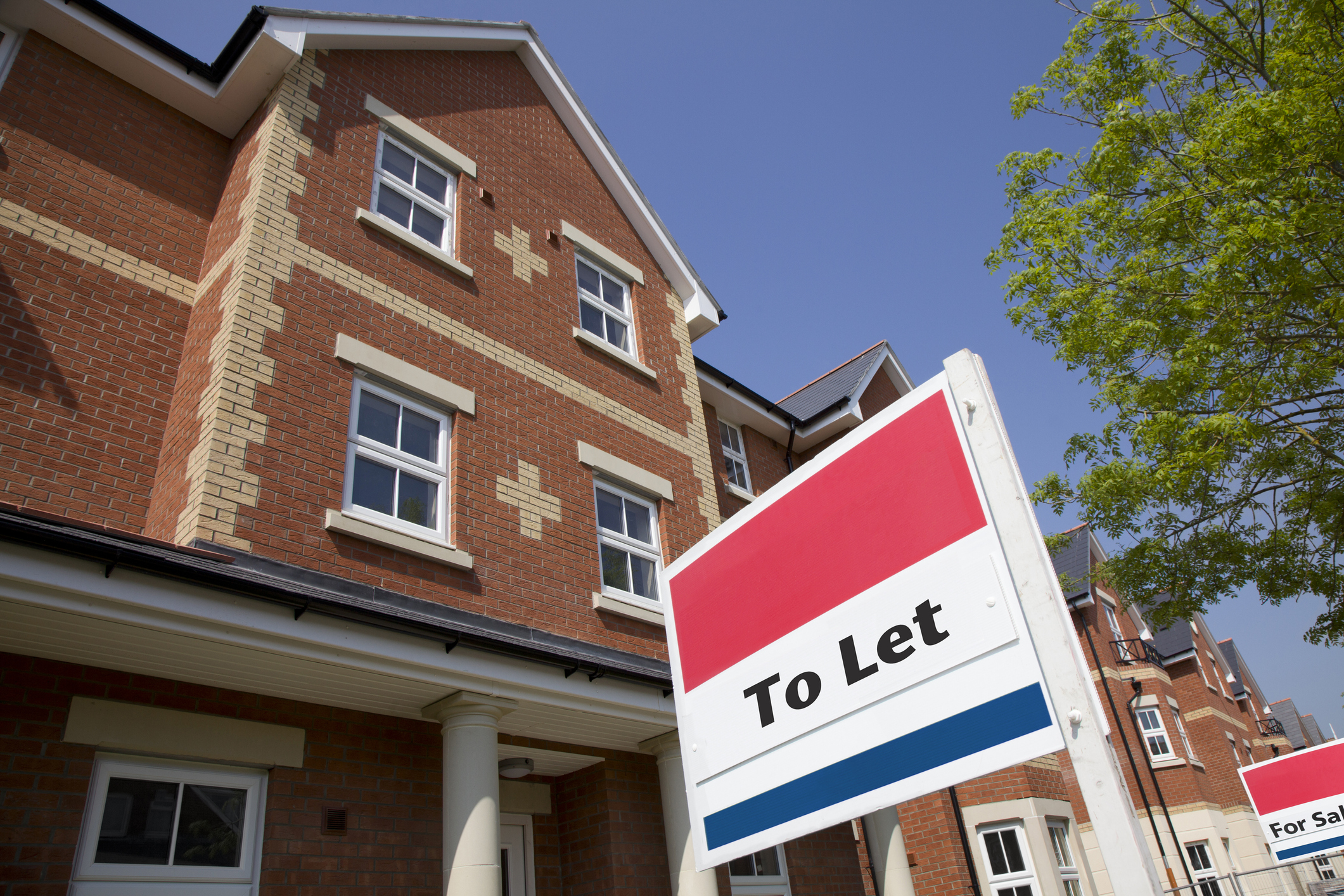Rents hit record high but are reaching affordability ceiling – is buy-to-let still worth it?
Rightmove data shows landlords are reaching the limit of what they can charge tenants

Katie Williams

The level of rent that landlords can charge tenants is approaching an “affordability ceiling” after reaching a record high last year, new figures suggest.
Landlords have been able to boost their buy-to-let portfolio and keep rents high due to rising demand from tenants and a lack of rental supply.
This has helped many property investors cope with scaled back tax reliefs and higher buy-to-let mortgage rates.
MoneyWeek
Subscribe to MoneyWeek today and get your first six magazine issues absolutely FREE

Sign up to Money Morning
Don't miss the latest investment and personal finances news, market analysis, plus money-saving tips with our free twice-daily newsletter
Don't miss the latest investment and personal finances news, market analysis, plus money-saving tips with our free twice-daily newsletter
But there are only so many increases in rent that a tenant can take, especially amid the cost of living crisis.
Rightmove data shows the average advertised rent for new properties coming onto on the rental market during the fourth quarter of 2023 hit another new record outside of London at £1,280 per calendar month.
Despite a 16th consecutive record in newly advertised rental prices, this quarter’s rise of just two pounds or 0.2% is the smallest since at this time in 2019 before the pandemic.
Rightmove data also shows that more rental listings are facing price cuts, adding to claims that landlords are facing an affordability ceiling when it comes to what tenants can and will pay.
“We’re seeing more evidence that many tenants are reaching the point where they can’t afford to pay any more in rent, which is leading to reductions in advertised rental prices and means some properties are staying on the market for longer,” says Christian Balshen, Rightmove’s lettings expert.
“The average time to find a tenant has ticked up from 19 days at this time last year, to 22 days now. To reduce the risk of void periods, landlords will need to work closely with a local letting agent this year, who will have access to the latest market insights to back up their years of expertise.”
What difficulties are landlords facing?
Higher buy-to-let taxes, falling house prices and lower mortgage rates for first-time buyers are taking away some of the shine of property investing.
Rental returns remain high but landlords are unlikely to get the double digit gains they have been used to in the past.
These factors are prompting many landlords to exit the sector or avoid adding to their portfolio.
Some are even setting up buy-to-let companies to hold their portfolio and maintain some tax perks.
Furthermore, while buy-to-let mortgage rates have fallen from their highs last summer, they are still significantly higher than the long-term average.
Today, the average two and five-year rates are both 5.48%, down from 6.88% and 6.72% respectively last August. For comparison, they were at 2.90% and 3.16% two years ago, according to Moneyfacts.
Data from UK Finance reveals that this is starting to bite. There were 13,570 buy-to-let mortgages in arrears of 2.5% or more in the final quarter of 2023. This figure has more than doubled compared to a year ago, and increased by 18% in the past three months alone.
While the figure remains small when you consider the total number of private landlords in the UK (around 2.82 million, according to the latest data from HMRC), it nevertheless points to a tougher buy-to-let landscape.
Even those that are comfortably meeting their mortgage repayments each month will have seen their profits squeezed by rising costs. This will be exacerbated further should rents plateau.
The state of the UK rental market
Rightmove figures show that advertised rents outside of London are now 9.2% higher than last year, which whilst still a significant annual increase, is the lowest rents have been compared to a year ago since 2021.
Similarly, rents in London reached a new record of £2,631 in the final three months of 2023.
However, this is just £4 higher than the previous quarter, as the yearly increase of rents in London halves from 12% last quarter, to 6% now. This is the first time London rent rises have been in single digits versus a year ago since 2021.
The property website suggests the rental market is slowing due to an easing of demand.
The number of tenants sending enquiries to letting agents to move is 13% lower than the same period last year, Rightmove said.
At the same time, the number of new rental properties coming onto the market is 7% higher than last year.
This means the average number of enquiries agents are receiving for every available rental property is currently 11, down from 14 in 2019.
Many tenants can’t afford rents on offer so landlords are making cuts to attract renters.
A quarter of rental properties saw a reduction in advertised rent by the landlord during the fourth quarter of 2023, up from the 16% at this time last year, suggesting the initial advertised rental price in some areas is increasingly out of reach for some tenants.
Hayley Brinn, director at The Total Letting Service says the rental market is still really busy and the high number of applicants per property is being exacerbated by some landlords leaving the market.
“Prices appear to be levelling out now as more choice becomes available, with tenants becoming more price sensitive, or just reaching the maximum of what they can afford to pay,” she says.
“The prices of larger properties in particular are slowing down, unless the landlord accepts an offer.
"Some tenants are reluctant to move unless they have no choice, due to the risk of being charged higher rents elsewhere, while other tenants who may want to move are stuck due to their current rent being below market value, and the price gap to move to a larger house is out of their reach. Rent prices slowing this year would benefit these tenants wanting to move.”
Will rents fall in 2024?
One of the main fundamentals of buy-to-let investing remains the supply and demand imbalance.
There will always be people who cannot afford to get on the housing ladder and this often outweighs the level of rental stock on the market.
But Rightmove warns that early signs indicate that the annual pace of rental growth will slow further in 2024.
It is predicting rents will be 5% higher outside of London by the end of 2024, and up 3% in London.
That is a long way from the double digit returns that many landlords will be used to.
“The trend of rent growth gradually slowing continues, with an improvement in the supply and demand of rental properties having a big contribution to that,” says Tim Bannister, Rightmove’s director of property science.
“We can’t keep seeing double digit rent rises every year as tenant affordability simply cannot keep up, and 2024 is the year we think there will be a much smaller increase in advertised rents of 5% outside of London, and 3% in the capital."
Get the latest financial news, insights and expert analysis from our award-winning MoneyWeek team, to help you understand what really matters when it comes to your finances.

Marc Shoffman is an award-winning freelance journalist specialising in business, personal finance and property. His work has appeared in print and online publications ranging from FT Business to The Times, Mail on Sunday and the i newspaper. He also co-presents the In For A Penny financial planning podcast.
-
 Boost for over 100,000 families on Child Benefit as new HMRC payment system rolled out
Boost for over 100,000 families on Child Benefit as new HMRC payment system rolled outThousands of households will no longer have to pay the dreaded High Income Child Benefit Charge through self-assessment
-
 Are you being haunted by the ghost of Christmas past? How festive cutbacks could boost your long-term wealth
Are you being haunted by the ghost of Christmas past? How festive cutbacks could boost your long-term wealthThe average family spends around £1,000 over the Christmas season. Here’s how much you could have gained if you had invested some of the money instead.